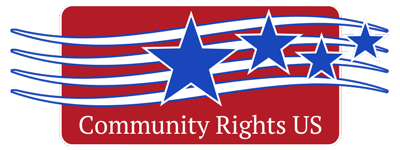Goals for the Webinar Series:
• Explore values, concepts, theory and practice of active nonviolence, nonviolent direct action, and civil disobedience
• Examine steps of a nonviolent action campaign as they pertain to your work
• Learn principles of effective community organizing
• Apply these insights to your local efforts in order to maximize your focus, power and effectiveness
It may seem strange to the folks who are becoming active in the Community Rights movement to picture our work as coming out of a long trajectory of nonviolent social change, but in fact, that’s exactly what we’re doing. This workshop will help you bring your organizing alive with core insights from the practice of nonviolent social change.
Nonviolence organizing, leadership development, and direct action (including civil disobedience) is an age-old method of protecting communities and nature from harm and building the future we dream.
The history of nonviolent social change movements is millennia long, as people over and over again withdraw consent from unjust institutions and invest their power in new structures. Current researchers observe that the global We The People is now gaining enough experience with active nonviolence that our campaigns and movements are becoming more effective with every decade that passes – and more threatening to the powerholders (for example, check out Erica Chenoweth and Maria Stephan’s work in brief HERE, or their book Why Civil Resistance Works).
Community rights organizers can benefit from this heritage in order to help win today’s struggles. When local communities pass Community Rights ordinances into law, the understanding is that the laws themselves are municipal acts of civil disobedience as they purposefully violate existing legal doctrines such as corporate constitutional so-called “rights”, state preemption, and Dillon’s Rule. Sometimes the local government is then sued by the impacted corporation or by the state itself, as an attempt to overturn the newly enacted local law.
The local government and residents then have to make some critical decisions about how to respond to the legal attack against their community’s right of self-government.
There are many options, limited only by the community’s imagination: They can defend their ordinance in the courts. They may also choose to defend their ordinance and their community by mobilizing local residents to bring the ordinance to life — by standing together to physically stop the corporation’s entry into their community, or using creative public theater and other forms of direct action to catalyze the public, build solidarity and exert pressure on powerholders. (There are at least 198 methods of nonviolent resistance!)
This webinar series will assist your community to apply values, theory, and practice of active nonviolence, nonviolent civil disobedience, and direct action, as you plan and develop your efforts to build power locally as part of your Community Rights campaign.
For more background, read this May 2012 article, “The Community Rights Movement and the Arc of Nonviolent Social Change“.
Webinar Series Length: Five hours minimum (usually two sessions), up to ten hours or more depending on local focus and needs.
Contact:
Matt Guynn, Director of nonviolent social change & organizing, On Earth Peace @ 503-465-4557, MGuynn@OnEarthPeace.org
and/or
Paul Cienfuegos, Co-Director, Lead Trainer & Founder, Community Rights US @ 503-233-1166, Paul@CommunityRights.US
